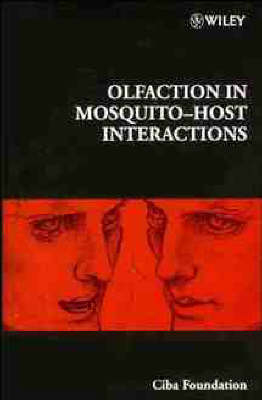
Olfaction in Mosquito-host Interactions
Seiten
1996
John Wiley & Sons Ltd (Verlag)
978-0-471-96362-2 (ISBN)
John Wiley & Sons Ltd (Verlag)
978-0-471-96362-2 (ISBN)
- Titel ist leider vergriffen;
keine Neuauflage - Artikel merken
This work contains an integrated discussion of the role of olfaction in mosquito-host interactions. It discusses the practical application of this knowledge in attempting to control malaria as a problem for world health.
Mosquito-borne parasitic diseases are major health problems in many developing countries. A clear understanding of olfactory-mediated mosquito host interactions is a prerequisite for any malaria control strategy based on disrupting mosquito olfactory-mediated behaviour. The book begins with a general overview of mosquito life cycle styles and how odour-mediated host location fits into the repertoire of behaviours that a specific species may exhibit. The general notion of now the physiological state of the mosquito can affect host-locating behaviour is discussed, together with the role of odour in mosquito orientation and other aspects of mosquito behaviour. Certain aspects of insect olfaction and its underlying physiological mechanisms are incorporated within this book. These include a discussion of the functional organization of the neural pathways mediating olfaction, and detailed data of the structure and physiology of mosquito olfactory receptor cells and the molecular biology of the receptor transduction process. Receptors for non-host-related odours and their relationship to host-locating behaviour are also discussed.
The principal focus of this symposium is on the ways in which our knowledge of olfactory-mediated mosquito host interactions might be used in mosquito control programmes. Therefore, a continuing theme throughout the discussions is the evaluation of data in relation to the development of such control programmes in the future.
Mosquito-borne parasitic diseases are major health problems in many developing countries. A clear understanding of olfactory-mediated mosquito host interactions is a prerequisite for any malaria control strategy based on disrupting mosquito olfactory-mediated behaviour. The book begins with a general overview of mosquito life cycle styles and how odour-mediated host location fits into the repertoire of behaviours that a specific species may exhibit. The general notion of now the physiological state of the mosquito can affect host-locating behaviour is discussed, together with the role of odour in mosquito orientation and other aspects of mosquito behaviour. Certain aspects of insect olfaction and its underlying physiological mechanisms are incorporated within this book. These include a discussion of the functional organization of the neural pathways mediating olfaction, and detailed data of the structure and physiology of mosquito olfactory receptor cells and the molecular biology of the receptor transduction process. Receptors for non-host-related odours and their relationship to host-locating behaviour are also discussed.
The principal focus of this symposium is on the ways in which our knowledge of olfactory-mediated mosquito host interactions might be used in mosquito control programmes. Therefore, a continuing theme throughout the discussions is the evaluation of data in relation to the development of such control programmes in the future.
Partial table of contents: Vector Insects and Their Control (M. Lehane). Genetics, Ecology and Behaviour of Anophelines (G. Gibson). Odour Plumes and Odour-Mediated Flight in Insects (R. Card?). Selection of Biting Sites by Mosquitoes ( R. de Jong & B. Knols). Structure and Function of Insect Olfactory Sensilla (R. Steinbrecht). Sensory Aspects of Host Location in Mosquitoes (M. Bowen). The Multiple Role of Pheromone-Binding Protein in Olfactory Transduction (G. Ziegelberger). Synthesis and Future Challenges: The Response of Mosquitoes to Host Odours (W. Takken). Indexes.
| Erscheint lt. Verlag | 30.7.1996 |
|---|---|
| Reihe/Serie | Ciba Foundation Symposium ; v. 200 |
| Zusatzinfo | Illustrations |
| Verlagsort | Chichester |
| Sprache | englisch |
| Maße | 156 x 236 mm |
| Gewicht | 670 g |
| Themenwelt | Studium ► Querschnittsbereiche ► Epidemiologie / Med. Biometrie |
| Studium ► Querschnittsbereiche ► Infektiologie / Immunologie | |
| Naturwissenschaften ► Biologie ► Mikrobiologie / Immunologie | |
| ISBN-10 | 0-471-96362-3 / 0471963623 |
| ISBN-13 | 978-0-471-96362-2 / 9780471963622 |
| Zustand | Neuware |
| Haben Sie eine Frage zum Produkt? |
Mehr entdecken
aus dem Bereich
aus dem Bereich
ein überfälliges Gespräch zu einer Pandemie, die nicht die letzte …
Buch | Hardcover (2024)
Ullstein Buchverlage
24,99 €


